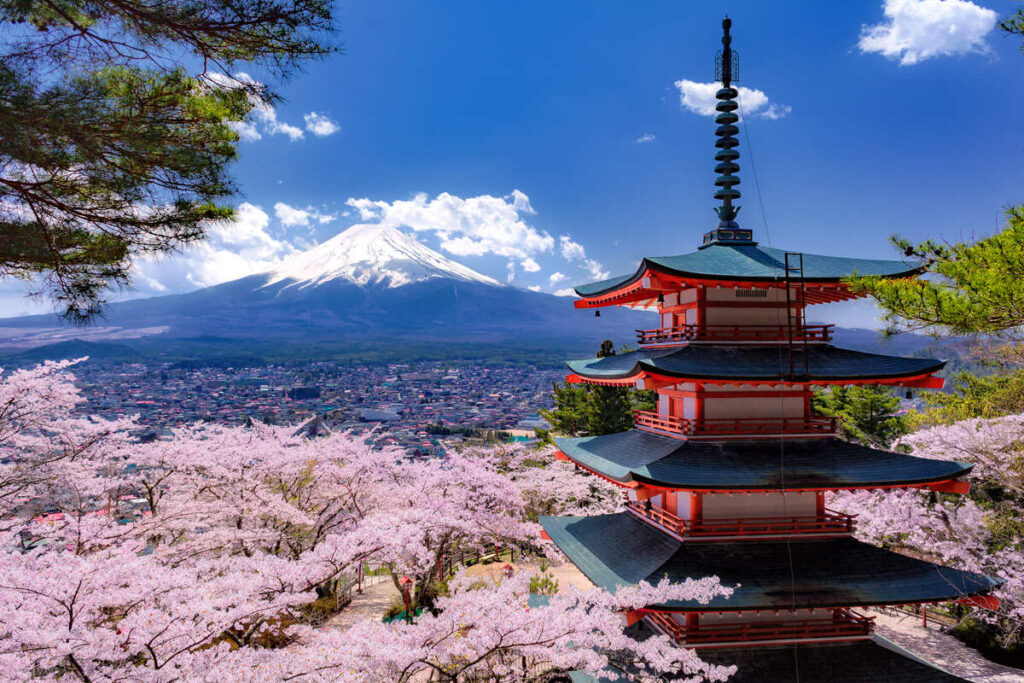No products in the cart.
Travel Guide
Why This Asian Country Will Be One Of The Most Popular Destinations For 2024
Last Updated
From 2020 to early 2023, visiting Japan was a distant dream for a majority of travelers.
As the country grappled with the effects of a health crisis, most foreign tourists were routinely barred from entry, including U.S. passport holders.
After nearly three years, however, the country finally slammed its doors open and began welcoming visitors again without restrictions. It’s no surprise it shot straight to the top ten of Google’s Most Searched Destinations, in a position it hadn’t held in a while.

Bookings for Japan have increased dramatically since, and if the latest travel trends are anything to go by, it could be set for a truly phenomenal 2024.
Amid the renewed Japanophilia, you may still be wondering why the East Asian country is suddenly so popular, again, especially when other Asian countries that also adopted restrictive measures, such as China, are yet to see as strong a rebound on the international tourism front.
Why Is Japan So Popular Right Now?

Japan has historically been one of the top destinations for Americans in the Asian continent, owing to their close historical ties, the unshakable Japanese-American camaraderie, and, of course, the country’s awe-inspiring culture.
This is all old news.
We are not here to regurgitate previously-written pieces on how exciting Tokyo is, Osaka’s world-class museums, or Kyoto’s picturesque cobbled alleys and centuries-old temples that have been left virtually untouched by two devastating world wars.

Of course, Japan’s perennial attractions an important role in the country’s resurgence, but that in itself does not account solely for a record-breaking return to pre-crisis tourism levels in only a few months, considering the wider reopening only took place last April.
So why, then, are tourists suddenly so invested in Japan?
It goes without saying that part of it has to do with the re-established flight connections between Japan and America, Europe, and most of the world, following a number of years of severed ties and, thus, a drastic reduction in travel demand, but we’re digging a little deeper here.

In preparing for its post-crisis relaunch, Japan is greatly diversifying its tourist offer.
Japan Is More Incredible Than It Ever Was
Overtourism was a major concern for Japanese authorities before the pandemic struck, mainly because travel demand was restricted to three major destinations, with all ‘ultimate’ Japan itineraries including the aforementioned Tokyo-Osaka-Kyoto trio, and they are keen on avoiding that.
Now, the Government is promoting a bunch of lesser-known spots tourists were previously oblivious to.

Some of the new focus areas include Ishikawa, one of the country’s unsung foodie hotspots and perhaps the best destination for sampling Japanese seafood and all its variations, and Wakayama, which marks the start of the Kumano Kodo pilgrimage route.
Crisscrossing the Kii Peninsula, this mountainous footpath surrounded by unspoiled nature leads to all Three Grand Shrines of Kumano, a triad of hugely important religious sites dating back centuries, and it’s a UNESCO World Heritage Site that will be celebrating its 20 years on the list in 2024.

As stated by Miho Oguri, Marketing and Communications Manager at JNTO (Japan National Tourism Organization), their focus next year is to promote Japan’s ‘regional areas’ to ‘let travelers see more of the variety of cultures in-depth’.
Other initiatives include the opening of a whopping 370km trail traversing at least three national parks in eastern Hokkaido, offering access to traditional villages and unheard-of natural wonders, and helping adventurous tourists reach ‘deep Japan’.
Japan’s popularity boom can also be explained by seasonal travel fatigue.

A Year-Round Destination
For years, Japan has been known as a springtime destination, as it is when cherry blossoms spring up in their vibrant colors, and much of the country’s inbound tourism is concentrated between the months of March and May.
In 2023, those dynamics changed.
Summer has brought more lively outdoor festivals; a sudden spike in bookings was seen during the fall period, dubbed the ‘new springtime’ for Japan due to the smaller crowds and magnificent foliage, which rivals cherry blossoms in beauty, and even winter travel is gaining traction.

Japan is not a widely-known snow and ski destination, but the weaker yen, and the largely underdeveloped Japanese highlands are now luring more investors, with several infrastructure projects and tourist facilities popping up.
This December, a new 78-key ski resort is opening its doors in Furano, in the so-called ‘belly button’ of Northern Hokkaido, a minimalist design, and rooms in comforting wooden tones that will certainly help American visitors get in the mood for a winter getaway in Japan.

The Nozo Hotel is among Japan’s most hotly-anticipated openings this year, as it is set against the pristine white landscape of Hokkaido Island’s mountainous North, and it is equipped with a spa, where cold water dips and saunas are available, and chic restaurants and cocktail bars.
Nozo is two hours away from Chitose International Airport, serving Sapporo, and an even shorter one-hour drive from the domestic Asahikawa Airport.
In 2024, additional luxurious retreats will be bowing, including Japan’s first-ever Rosewood listing in the tropical Miyakojima Island, famous for its golden sand beaches and turquoise seas, and a Six Senses in charming Kyoto.

As Oguri reiterated, authorities are pushing for Japan to become a ‘year-round destination‘.
Finally, there is the fact that Japan is becoming cheaper to travel.
Cheaper Prices
Not only has the Government greenlit a number of projects that make it easier for tourists to explore Japan on a budget, such as a new one-day travel pass for Eastern destinations, but the Japanese currency itself – the yen – is now weaker than it was pre-2019.

Regarding the new pass, it’s an all-you-can-ride ticket for all JR East-operated lines.
Unfortunately, these do not cover the typical Tokyo-Kyoto-Osaka-Hiroshima itinerary, but it does allow holders unlimited travel between destinations such as Aomori, Sendai, Kanazawa, Nagano, Niigata and Morioka, six of Japan’s most fascinating off-path gems.
With tickets starting at just 10,000 yen, or only $70.53 at the current exchange rate, you can even hop on a shinkansen bullet train line to get to your preferred destinations faster.
As for the yen, this year, it’s reached new lows against the dollar, trading at a threshold of ¥150, when in 2019, prior to the health crisis, it equaled only ¥109.
Read More:
Top 5 Travel Insurance Plans For 2023 Starting At $10 Per Week
How To Easily Earn Points For Free Travel
↓ Join Our Community ↓
The Travel Off Path Community FB group has all the latest reopening news, conversations, and Q&A’s happening daily!

SUBSCRIBE TO OUR LATEST POSTS
Enter your email address to subscribe to Travel Off Path’s latest breaking travel news, straight to your inbox.
This article originally appeared on TravelOffPath.com
Source link

